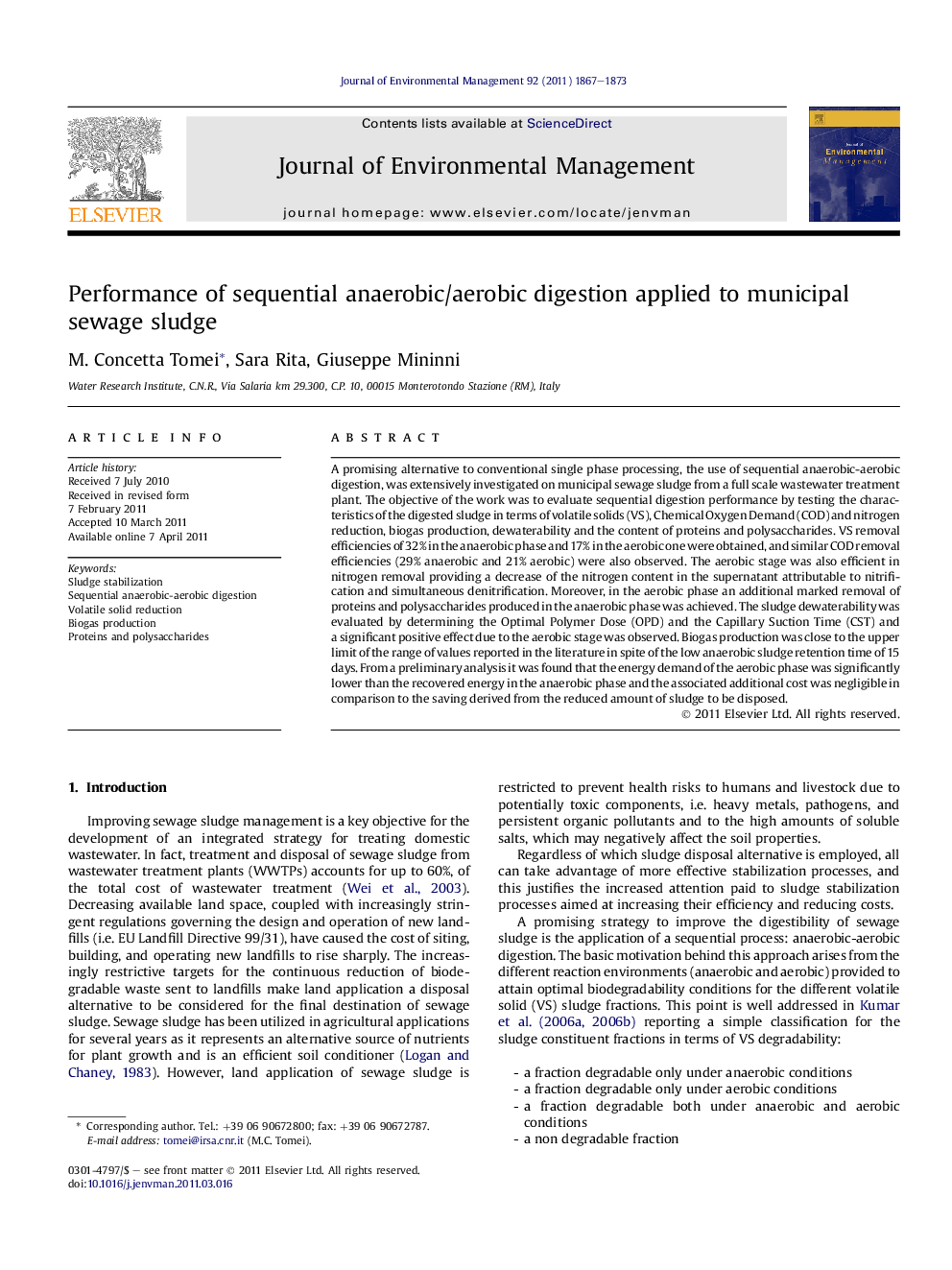| Article ID | Journal | Published Year | Pages | File Type |
|---|---|---|---|---|
| 1057170 | Journal of Environmental Management | 2011 | 7 Pages |
A promising alternative to conventional single phase processing, the use of sequential anaerobic-aerobic digestion, was extensively investigated on municipal sewage sludge from a full scale wastewater treatment plant. The objective of the work was to evaluate sequential digestion performance by testing the characteristics of the digested sludge in terms of volatile solids (VS), Chemical Oxygen Demand (COD) and nitrogen reduction, biogas production, dewaterability and the content of proteins and polysaccharides. VS removal efficiencies of 32% in the anaerobic phase and 17% in the aerobic one were obtained, and similar COD removal efficiencies (29% anaerobic and 21% aerobic) were also observed. The aerobic stage was also efficient in nitrogen removal providing a decrease of the nitrogen content in the supernatant attributable to nitrification and simultaneous denitrification. Moreover, in the aerobic phase an additional marked removal of proteins and polysaccharides produced in the anaerobic phase was achieved. The sludge dewaterability was evaluated by determining the Optimal Polymer Dose (OPD) and the Capillary Suction Time (CST) and a significant positive effect due to the aerobic stage was observed. Biogas production was close to the upper limit of the range of values reported in the literature in spite of the low anaerobic sludge retention time of 15 days. From a preliminary analysis it was found that the energy demand of the aerobic phase was significantly lower than the recovered energy in the anaerobic phase and the associated additional cost was negligible in comparison to the saving derived from the reduced amount of sludge to be disposed.
